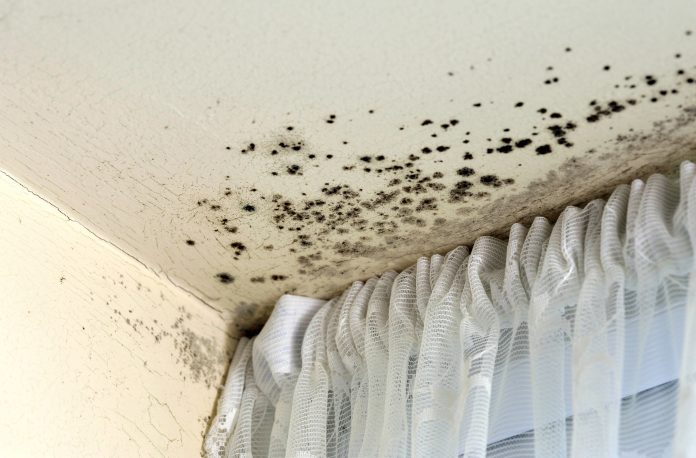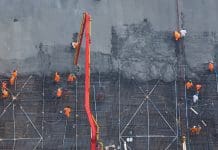The new Green Homes Grant Scheme has worthy aims but, warns James Berry of the Property Care Association, when it comes to insulation and ventilation, rushing into retrofit can bring serious unintended consequences
The Green Homes Grant Scheme was introduced at the end of September with the aim to stimulate the construction sector during the Coronavirus crisis, to help homeowners save valuable cash on their energy bills and take steps to reduce the country’s carbon emissions, all while (hopefully) improving the housing stock. Undoubtedly these are admirable and worthy causes.
The sheer scale of the project, however, and the incredibly fast turnaround (announced late July, rolled out in September 2020, and finishing before Easter 2021) gives cause for concern. It is precisely another reason to look at and remind all building professionals of the consequences of poorly checked and installed insulation measures, and how we can avoid them.
Moisture imbalance can lead to expensive complications
Cavity, internal and external wall insulation changes a building and how it deals with water. An understanding of this is important not only to the designer of the retrofit insulation scheme but also to the building surveyor who will subsequently inspect insulated buildings, and to the people who own and use buildings.
Dealing with moisture generated within the building is relatively simple. Improving the ventilation system is acknowledged by almost everyone as a fundamental element of any retrofit insulation scheme. What must also be understood is that these augmented air extraction systems must be maintained for the lifetime of the building. Failure to repair, service and renew ventilation systems over time will result in expensive and unhealthy moisture imbalance.
Understanding the principle of “fabric first” is key
The principle of “fabric first” when considering retrofit insulation is taken from the highly regarded PAS2035. The principle being that insulation must never be applied within or over defects in the underlying building fabric. This mantra is hugely important and we would urge homeowners to insist on detailed pre-installation checks on the property before any insulation is applied.
Moisture-related issues, blocked cavities, defective guttering and high ground levels should never be overlooked. In our experience, the risks of calamitous, costly and highly damaging issues with damp and timber decay are hugely increased when underlying defects are ignored or covered up.
It must be remembered that retrofit insulation introduces new layers of material that can mask dampness, conduct or hold water, or even prevent the transition of moisture by drying. This is a fact and though it should not put people off insulating their homes, we must understand the increased importance of maintenance and keeping water out of the structure.
Take cavity wall insulation, for example. Cavities filled with air are good at stopping internal walls getting wet even if the outside leaf or masonry is in poor condition. Fill it with insulation and even the best product installed by the most diligent installer can become wet and allow moisture transfer. This sort of direct correlation between what once may have been considered minor defects and the greater significance of water ingress to the retrofitted buildings can be seen in all forms of retrofit.
Cavity wall and retrofit insulation fails
Cavity wall insulation has been a subject that successive governments over the past 30 years have attempted to promote. Previous government drives such as Eco and Warmfront have made it readily apparent that in many homes, instead of creating energy-saving conditions, the process locked dampness and humidity into many homes. This led to potentially expensive damp and rot repairs and, in some cases, structural problems.
Quite simply, cavity walls exist for good reason and that is to provide a barrier against rainwater penetration. The problem is that a great many of these cavity voids are either simply unsuitable for cavity wall insulation, or unqualified specialists have overpacked the cavity with insulation, resulting in rainwater travelling through the insulation and reaching the internal wall. Thus, creating problems with penetrating damp, mould, condensation and rot.
Why does this happen? Retrofit insulation installers may have the best of intentions but these government-backed subsidies have always attracted a number of suppliers who are not sufficiently skilled. On top of that, as competent as a retrofit insulation specialist might be, they do not necessarily have the skills and knowledge to identify the potential ripple effects from the work they are doing.
Let’s think about avoiding previous problems
“Unintended consequences” has felt like one of the recent buzz terms with the more airtight we make our properties (without taking a proper and holistic approach to improving the energy efficiency of our building), the more likely we are to end up with “unintended side effects” to the intended good planned for the property. Principally, this will be dampness and mould.
By reducing the amount of air escaping our homes and buildings by draughtproofing and insulating, we are also preventing moisture escaping too. Modern lifestyles mean we now produce a huge amount of moisture within our homes through cooking, cleaning, washing and, of course, breathing; all of which produce moisture. Historically, moisture would escape through draughty windows and chimneys but as we make our properties airtight, this is no longer the case.
Why is it important that moisture is controlled?
Excessive humidity can provide the perfect conditions for mould growth and condensation. If the conditions are right for mould growth then they are probably right for other indoor air quality issues too. A supply of fresh air is not just important for controlling moisture, but also for:
- Supplying air for breathing.
- Dilution and removal of pollutants.
- Air for fuel burning appliances.
- Temperature control.
This means that if we are to avoid unintended consequences, we must ensure that in addition to the retrofit measure – the insulation, windows etc, that are available through grants – we must also be ensuring that the property is adequately ventilated. Typically, this is provided by mechanical ventilation. There are various mechanical ventilation systems but most commonly, they are extractor fans in kitchens and bathrooms.
Before you insulate, ask yourself “how is the building ventilated?”
If you are thinking of insulating, you should also be thinking about how the building is ventilated and is it enough to avoid any unintended consequences.
We understand that in the latest rollout of the Green Homes Grant Scheme that ventilation will be eligible. This is a very welcome development. As homeowners will be enticed by the prospect of lower heating bills, little if any consideration will be given to the wider-reaching consequences this might have on the internal environment. Ventilation should not be an afterthought and we hope that proper consideration is given to installing appropriate ventilation.
Assessment of ventilation is a specialised subject
Some of the new guidance being provided around retrofit, which unfortunately will not be enforced by the time this scheme is rolled out, does give some consideration to ventilation. While this is commendable, one concern is that it places the assessment of building services such as ventilation on limited criteria and principally assumes the presence of a ventilation system is sufficient.
In my experience, assessment of ventilation is a specialist subject and making the assumption that it is adequate based solely on its presence without appropriate testing and assessment is likely to result in issues of dampness and mould, which may potentially be harmful to occupants.
We must take caution and not get swept up by the Green Homes Grant
So, what is the answer? We must try not to get swept up by the Green Homes Grant Scheme. We must take time to ensure that buildings are in a fit condition to accept insulation and that owners and occupiers understand the long-term implications of what they are doing to their homes.
Experts know the consequences of poorly designed, badly executed, rushed and ill-maintained retrofit, so let’s make sure this is communicated to the hundreds of thousands of people that will be applying for a voucher. Good clients that understand what they are buying is good for everyone.
Educate and inform the public
We urge the government, industry, regulators and the media to educate the public, to help them understand that energy saving measures are to be embraced but retrofit affects the way the building works forever and the way we look after them must also change forever.
We all want greener homes, but that greenery must not be allowed to grow on the walls of our kids’ bedrooms.
The Green Homes Grant Scheme should be a force for good. Design, understanding, planning and the use of skilled diligent installers are the keys to every successful retrofit job. We have created a microsite to help consumers become better clients and contractors become better suppliers – breaking down the tidal wave of information that has been released by the government and TrustMark into meaningful, useable guidance: https://www.property-care.org/green-homes-grant/
James Berry
Technical manager
Property Care Association
+44 (0)1480 400 000
Twitter: @PCAPropertyCare
LinkedIn: Property Care Association














